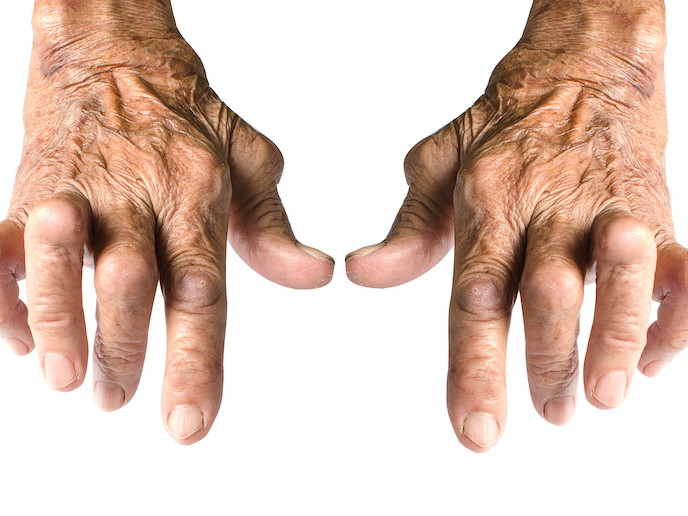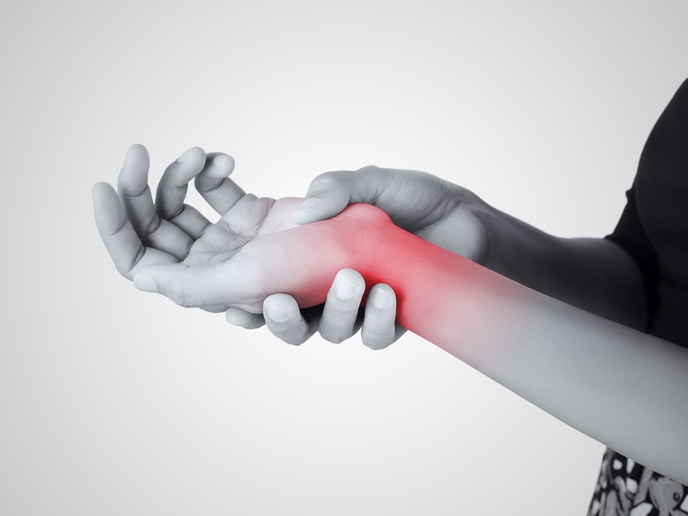MRI facilitates diagnosis of preclinical rheumatoid arthritis
Rheumatoid arthritis (RA) affects around 1 % of the population. About 5 million people in Europe have RA, which costs approximately EUR 45 billion a year, including societal costs such as lost income. It’s a chronic, painful condition that has no cure, but early diagnosis can lead to a patient responding better to treatment. This can mean they enjoy a fuller life and continue working. Patients at risk of developing RA have a combination of symptoms while the joint swelling, clinically apparent arthritis, is still absent. This combination of symptoms is called clinically suspect arthralgia (CSA). By considering CSA, physicians can diagnose patients in a ‘pre-RA phase’, which is important as recent trials showed that interventions in this ‘at-risk’ phase can reduce disease chronicity. In 2012, Annette van der Helm-van Mil established the (CSA(opens in new window) rule), now universally accepted, which brings together the clinical early warning signs of RA to facilitate diagnosis. Building on her previous clinical findings, and the contribution of a team including scientists, clinicians and engineers, the RACE project, funded by the European Research Council(opens in new window), conducted a study of the largest CSA cohort ever gathered. “Our project was interested in establishing more, and better markers that can be assessed in order to accurately identify arthralgia patients at risk of RA,” explains project coordinator Van der Helm-van Mil(opens in new window), professor of rheumatology at Leiden University Medical Center(opens in new window) in the Netherlands.
Interdisciplinary studies examine autoimmune response during RA development
Given that about half of those with RA have autoantibodies and the other half are autoantibody-negative, RACE focused on the autoimmune response in the patients with CSA. Because of its association with joint destruction, anti–citrullinated protein antibody (ACPA)–positive RA is considered to be more severe than ACPA-negative RA. “I worked with an excellent team of immunologists that were able to isolate ACPA and study its characteristics,” adds Van der Helm-van Mil. The latest computational tools were used by radiologists, while anatomists and AI experts created automated MRI evaluations using deep learning techniques. These techniques make the interpretation of data from MRI scans quicker, meaning large amounts of data can be sifted to produce a more refined understanding. “We looked at MRIs of hands or feet, the place where inflammation in CSA and RA starts. Joint inflammation can be identified in the earliest stages of CSA before it is clinically evident,” Van der Helm-van Mil explains. Thanks to the work of the talented team, the project expanded the anatomic atlases of the hand and forefeet by identifying previously unknown synovial tissues.
Robust new markers indicate presence of RA prior to development of symptoms
The project established that certain autoimmune responses are already evident at the onset of CSA. “We identified some novel autoantibody characteristics that are helpful in predicting RA development. Importantly, we studied an extensive set of autoantibody characteristics over time, during the progression from CSA and RA.” The team established these characteristics don’t change during the transition to RA, which suggests that the autoantibody response is already mature when CSA starts. “But, as not everyone with CSA goes on to develop RA, the autoantibody response alone is not the final factor that drives the development of RA,” she says. Some novel autoantibody blood tests do, marginally, help predict who will develop RA. The project’s real advance was to establish the relevance of inflammation in hand and feet joints, as indicated in MRI scans, as a more accurate indicator of those who will go on to develop RA. These are, amongst others, tenosynovitis (tendon sheath inflammation) in the hands and forefeet and intermetatarsal bursitis (inflammation of synovial lining of the bursae in the forefeet). As Van der Helm-van Mil adds, this is novel and important as rheumatologists are frequently reluctant to use MRI. “As recent data shows that treatment started in the CSA stage can prevent RA, or reduce the disease burden, the data collected by RACE demonstrates the importance of MRI in accurate, early diagnoses.”







